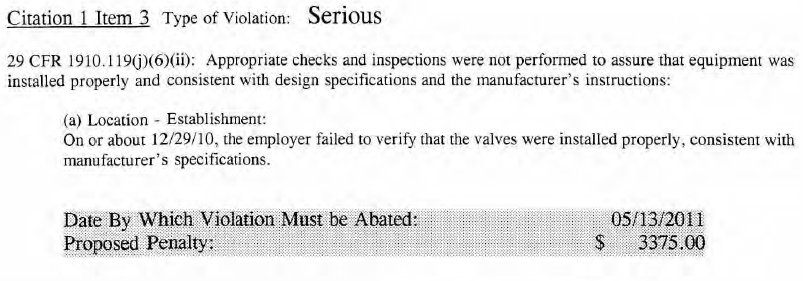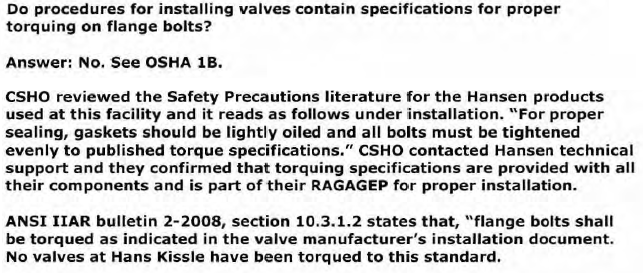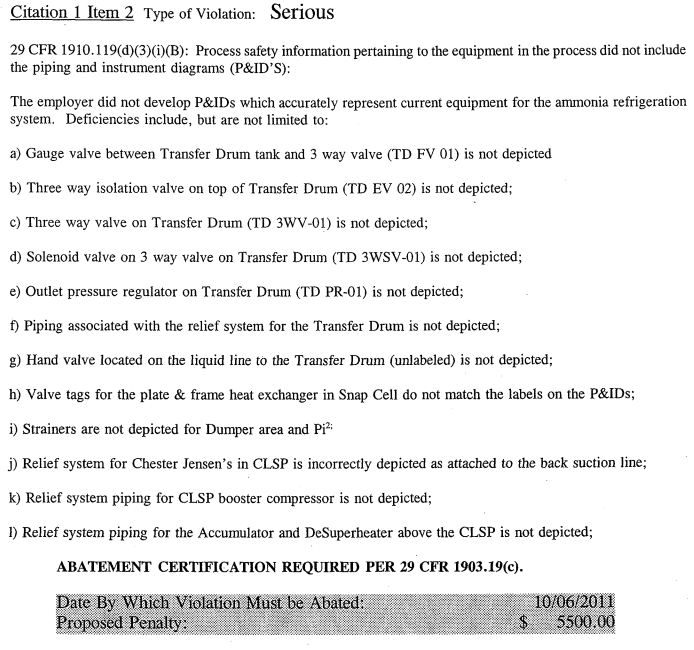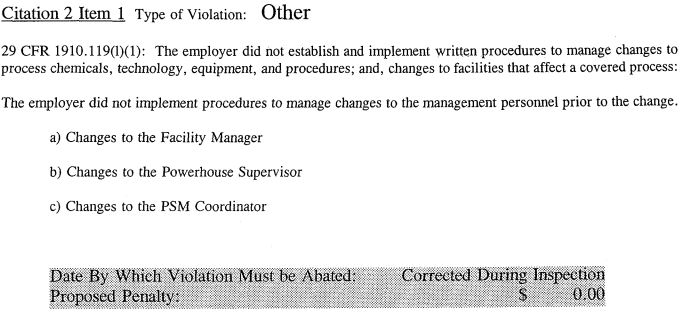
“In FY 2010, OSHA found 96,742 violations of OSHA’s standards and regulations in the nation’s workplaces, a 15.3% increase since FY 2006. The total number of serious and repeat violations issued increased by 22.1% and 8.1%, respectively, over the past five years. The total number of willful violations issued significantly increased by 217.1% since FY 2006 and increased by 278.8% since FY 2009.” —OSHA
It was fairly obvious that OSHA was really concentrating on Willful violations last year but it’s nice to see it quantified. That’s 3x as many as the last four years!
How could this affect you? Do you have an outstanding issue from a PHA, Incident Investigation or Compliance Audit that you have not addressed? If so, you might be looking at a Willful violation.
What is a Willful Violation? Let’s see what OSHA has to say about that:
(1) A willful violation exists under the Act where the evidence shows either an intentional violation of the Act or plain indifference to its requirements.
(a) The employer committed an intentional and knowing violation if:
- An employer representative was aware of the requirements of the Act, or the existence of an applicable standard or regulation, and was also aware of a condition or practice in violation of those requirements, and did not abate the hazard.
- An employer representative was not aware of the requirements of the Act or standards, but was aware of a comparable legal requirement (e.g., state or local law) and was also aware of a condition or practice in violation of that requirement, and did not abate the hazard.
(2) The employer committed a violation with plain indifference to the law where:
- Higher management officials were aware of an OSHA requirement applicable to the company’s business but made little or no effort to communicate the requirement to lower level supervisors and employees.
- Company officials were aware of a continuing compliance problem but made little or no effort to avoid violations. EXAMPLE: Repeated issuance of citations addressing the same or similar conditions.
- An employer representative was not aware of any legal requirement, but was aware that a condition or practice was hazardous to the safety or health of employees and made little or no effort to determine the extent of the problem or to take the corrective action. Knowledge of a hazard may be gained from such means as insurance company reports, safety committee or other internal reports, the occurrence of illnesses or injuries, media coverage, or, in some cases, complaints of employees or their representatives.
- Finally, in particularly flagrant situations, willfulness can be found despite lack of knowledge of either a legal requirement or the existence of a hazard if the circumstances show that the employer would have placed no importance on such knowledge even if he or she had possessed it, or had no concern for the health or safety of employees.
(3) It is not necessary that the violation be committed with a bad purpose or an evil intent to be deemed “willful.” It is sufficient that the violation was deliberate, voluntary or intentional as distinguished from inadvertent, accidental or ordinarily negligent.
There’s plenty more where that came from. 1(a)(1) Seems to be a pretty clear cut case for not abating a known deficiency from a PHA, Incident Investigation, Compliance Audit, etc.
 What equipment could this citation be concerning? Take a look at the compliance officer’s narrative:
What equipment could this citation be concerning? Take a look at the compliance officer’s narrative:




